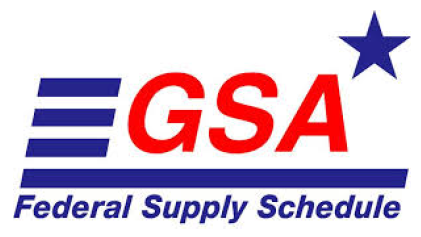Introduction
The landscape of federal contracting is evolving rapidly, influenced by technological advancements and a heightened focus on sustainability and security. This article explores the key trends shaping federal contracting in 2024, providing actionable insights for contractors to stay competitive.
1. AI Integration in Federal Contracting
Artificial intelligence (AI) is transforming federal contracting by automating routine tasks and enhancing data analytics. This integration is streamlining operations, reducing errors, and enabling more informed decision-making. AI applications in federal contracting include:
Automating Data Entry and Contract Management
AI can handle repetitive tasks more efficiently than humans, freeing up resources for more strategic activities. Automated systems can process vast amounts of data quickly and accurately, ensuring that contract management is up-to-date and compliant with regulatory requirements.
Enhancing Predictive Maintenance
By analyzing large datasets, AI can predict when maintenance is needed, preventing costly downtime. This proactive approach not only saves money but also ensures that federal projects run smoothly without unexpected interruptions.
Fraud Detection
AI can identify patterns indicative of fraud, enhancing security and compliance. Advanced machine learning algorithms can detect anomalies in transaction data, alerting authorities to potential fraudulent activities before they escalate.
Key Resource:
2. Sustainability as a Core Criterion
Sustainability is becoming increasingly crucial in federal contracting. Government mandates are pushing contractors to adopt eco-friendly practices and integrate renewable energy solutions. The emphasis on sustainability offers several benefits:
Environmental Impact
Reducing carbon footprints and promoting green technologies are at the forefront of federal contracting priorities. Contractors are encouraged to use sustainable materials and implement energy-efficient processes in their projects.
Competitive Edge
Contractors who specialize in sustainable practices are more likely to win contracts. Demonstrating a commitment to environmental stewardship can set firms apart in a competitive bidding environment.
Compliance with Regulations
Staying ahead of regulatory requirements can prevent potential legal issues. By adhering to federal sustainability standards, contractors can avoid penalties and enhance their reputation as responsible partners.
Key Resource:
3. The Imperative of Robust Cybersecurity
As federal operations become more digitized, the need for robust cybersecurity measures grows. The rise in cyber threats has made advanced cybersecurity solutions essential for contractors. Key considerations include:
Protecting Sensitive Data
Implementing advanced encryption and security protocols to safeguard information is critical. Contractors must ensure that all data, particularly sensitive government information, is protected against unauthorized access and cyberattacks.
Compliance with Standards
Adhering to federal cybersecurity requirements, such as those outlined by the National Institute of Standards and Technology (NIST), is mandatory. Compliance ensures that contractors meet the security expectations set by the government.
Innovation in Security Solutions
Developing and deploying cutting-edge cybersecurity technologies to stay ahead of threats is vital. Continuous innovation in security measures helps protect federal assets from evolving cyber threats.
Key Resource:
4. Agile Methodologies: Enhancing Flexibility
Agile methodologies are becoming vital in federal project management and service delivery. This iterative approach promotes flexibility, efficiency, and collaboration. Benefits of adopting agile methodologies include:
Improved Project Outcomes
The enhanced ability to adapt to changes and deliver projects on time is a significant advantage. Agile methodologies allow teams to respond quickly to project requirements, ensuring timely and efficient delivery.
Increased Collaboration
Fosters better communication and teamwork among project stakeholders. Agile frameworks encourage continuous feedback and collaboration, resulting in more cohesive and aligned project teams.
Efficiency
Streamlines processes, reducing waste and improving resource utilization. Agile practices help eliminate unnecessary steps, focusing on delivering value at each stage of the project.
Key Resource:
5. Collaborative Partnerships and Teaming Agreements
Federal projects often require a diverse set of skills and technologies that no single contractor can provide alone. Collaborative partnerships through teaming agreements and joint ventures are becoming more common. Advantages include:
Resource Sharing
Combining resources and expertise to offer comprehensive solutions is beneficial. Partnerships enable contractors to pool their strengths, providing more robust and versatile project solutions.
Enhanced Capabilities
Partnering with other firms to meet complex project requirements is increasingly necessary. By joining forces, contractors can tackle larger and more intricate projects than they could alone.
Competitive Advantage
Forming strategic alliances increases the chances of winning contracts. Collaborative efforts often result in stronger proposals and more innovative solutions, giving contractors a competitive edge.
Key Resource:
Conclusion
Staying competitive in the federal contracting space in 2024 requires embracing emerging trends. By integrating AI, focusing on sustainability, enhancing cybersecurity, adopting agile methodologies, and forming strategic partnerships, contractors can better align with federal goals and improve their market offerings.
________________________________________________________________________________________________________________
Welcome, Capitol 50 members! As part of your exclusive membership, you have full access to our in-depth resources, including detailed analysis, case studies, and expert interviews on implementing these trends in your contracting strategies. Our premium content is designed to provide you with actionable insights and a competitive edge in the federal contracting arena.
Thank you for being a valued member of Capitol 50. Stay ahead of the curve with our expert insights and exclusive resources designed to support your success in 2024 and beyond.



